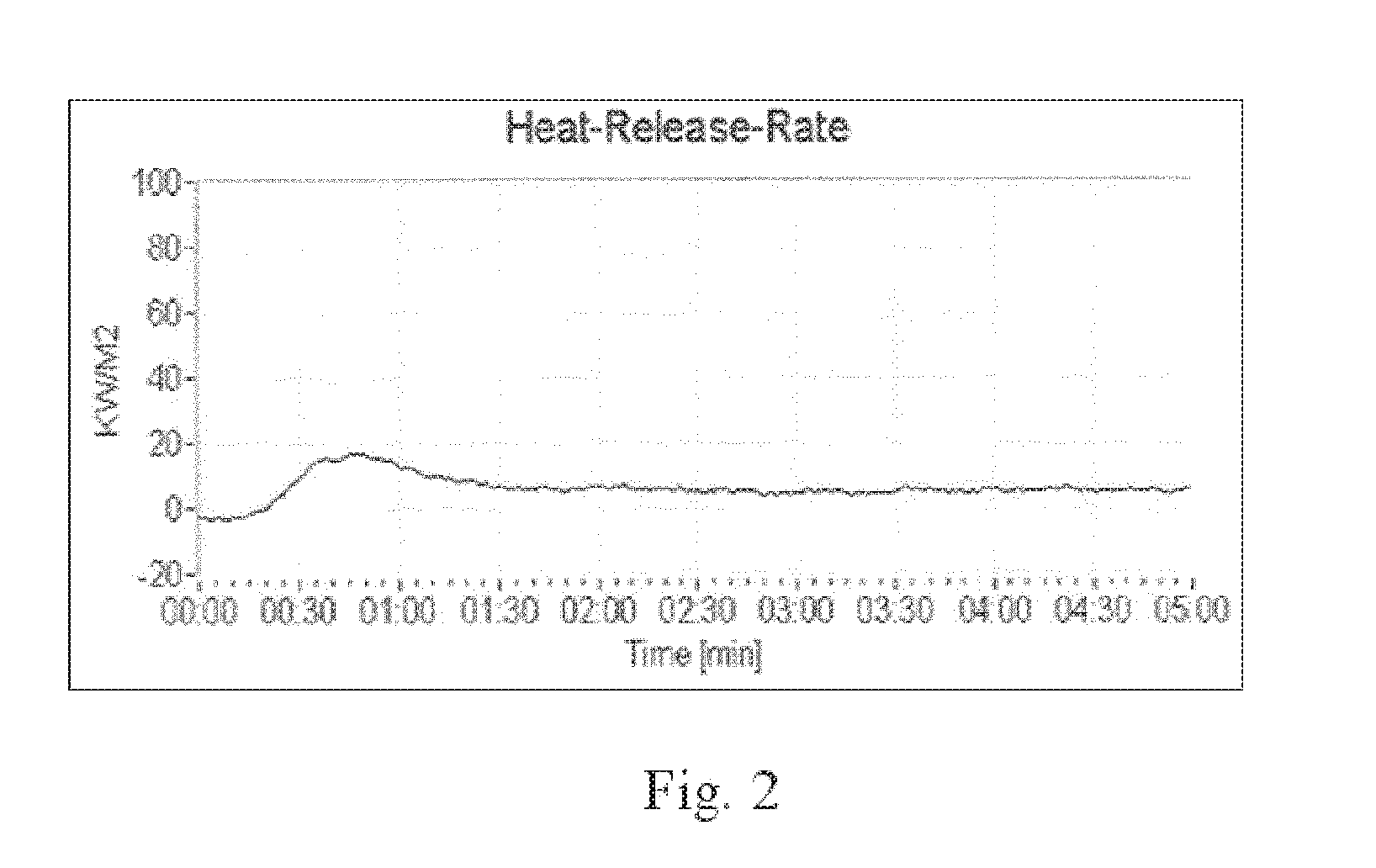Composite Element and Use Thereof
a technology of composite elements and elements, applied in the field of composite elements, can solve the problems of not meeting the applicable fire protection requirements, no solutions have been demonstrated, and the weight per unit area of such interior furnishing elements must be observed, so as to prevent the spread or transmission of smoke, reduce weight, and reduce the effect of weigh
- Summary
- Abstract
- Description
- Claims
- Application Information
AI Technical Summary
Benefits of technology
Problems solved by technology
Method used
Image
Examples
example 4
[0117]
MaterialThicknessGlass layerChemically prestressed aluminosilicate0.55mmglassOrganic layerOCA50μmASecond glassChemically prestressed aluminosilicate0.55mmlayerglass
[0118]Weight per unit area: 2.78 kg / m2.
[0119]Total thickness of the organic layers: 50 μm.
[0120]Ratio of the thickness of the glass panel to the total thickness of the organic layers: 1:0.045.
example 5
[0121]
MaterialThicknessGlass layerChemically prestressed aluminosilicate1.0mmglassOrganic layerInterlayer TPU350μmASecond glassChemically prestressed borosilicate0.7mmlayerglass
[0122]Weight per unit area: 4.61 kg / m2.
[0123]Total thickness of the organic layers: 350 μm.
[0124]Ratio of the thickness of the glass pane to the total thickness of the organic layers: 1:0.206.
example 6
[0125]
MaterialThicknessGlassChemically prestressed aluminosilicate glass0.55mmlayerOrganicInterlayer made of silicone-based, highly200μmlayer Atransparent plastic film, such as the one offeredby the company Wacker Chemie AG / D-Munichunder the trade name Tectosil ®SecondChemically non-prestressed borosilicate glass0.21mmglasslayer
[0126]Weight per unit area: 2.10 kg / m2.
[0127]Total thickness of the organic layers: 200 μm.
[0128]Ratio of the thickness of the glass pane to the total thickness of the organic layers: 1:0.263.
PUM
| Property | Measurement | Unit |
|---|---|---|
| total thickness | aaaaa | aaaaa |
| total thickness | aaaaa | aaaaa |
| transparency | aaaaa | aaaaa |
Abstract
Description
Claims
Application Information
 Login to View More
Login to View More - R&D
- Intellectual Property
- Life Sciences
- Materials
- Tech Scout
- Unparalleled Data Quality
- Higher Quality Content
- 60% Fewer Hallucinations
Browse by: Latest US Patents, China's latest patents, Technical Efficacy Thesaurus, Application Domain, Technology Topic, Popular Technical Reports.
© 2025 PatSnap. All rights reserved.Legal|Privacy policy|Modern Slavery Act Transparency Statement|Sitemap|About US| Contact US: help@patsnap.com



